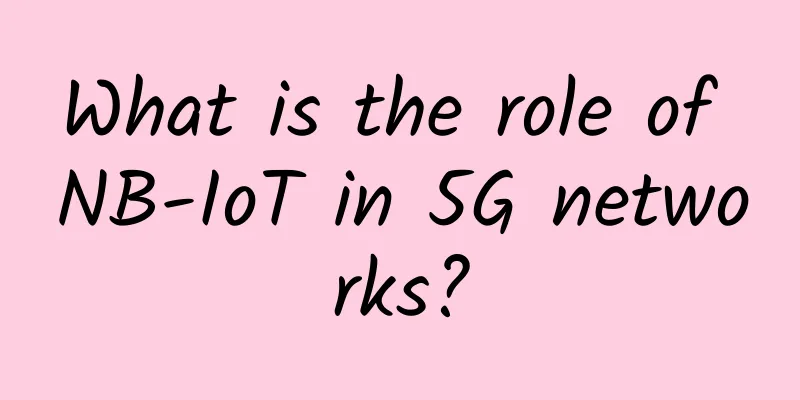How does 5G achieve beamforming?

|
Beamforming, as one of the core technologies of 5G, is always accompanied by concepts such as AAU and massive MIMO. All of this seems so natural.
However, there are many mysteries hidden behind these four simple words, silently driving the rapid operation of 5G. Below, I will try to unravel the mystery of beamforming. After reading this article, you will understand: What is beamforming? What is the basic principle of beamforming? How does 5G achieve beamforming? 1. What is beamforming? The concept of "beamforming" can be understood by splitting it into two words: "beam" and "forming". The word "bo" in "beam" can be considered as electromagnetic waves, and the original meaning of "beam" is "to bundle", so the meaning of beam is electromagnetic waves that are bundled together and propagated in a concentrated manner; and "shaping" can be simply understood as "giving a certain shape." In summary, beamforming means giving a certain shape to the electromagnetic waves that propagate in a concentrated manner. In fact, the light we commonly see is also a kind of electromagnetic wave. As a point light source, the light emitted by a light bulb has no directionality and can only be continuously dissipated in all directions; while a flashlight can concentrate the light in one direction, with more focused energy, thus illuminating farther. The same is true for wireless base stations. As shown in the figure below, if the antenna signals are transmitted omnidirectionally, these mobile phones can only receive limited signals and most of the energy is wasted. If the signal can be focused into several beams through beamforming and specifically directed to each mobile phone for transmission, the electromagnetic energy carrying the signal can be transmitted farther, and the signal received by the mobile phone will be stronger. Therefore, beamforming has great potential in wireless communications. 2. What is the basic principle of beamforming? The physical principle of beamforming is actually the interference phenomenon of waves. Baidu Encyclopedia defines it as follows: The superposition of two waves with the same frequency strengthens the vibration in some areas and weakens the vibration in some areas, and the areas with strengthened vibration and weakened vibration are separated from each other. Imagine that while walking by the lake, you and your girlfriend stir up waves at two points very close to each other, and the two ripples continue to spread out and then overlap to form the following pattern. It can be seen that the water waves are strengthened in some places and weakened in others, and the strengthened and weakened areas are distributed at intervals, which is most obvious in the narrow area in the middle. If the crests meet, or the troughs meet, the energy is added, the crests are higher, and the troughs are deeper. This is called constructive interference. On the other hand, if the crests meet, the two cancel each other out, and the vibrations return to silence. This is called destructive interference. If we abstract this phenomenon, we can get the following picture: Due to constructive interference, the energy is strongest in the middle of the two feed sources, which can be considered to form a directional beam, also called the main lobe; the energy on both sides is canceled due to destructive interference, forming a null, and constructive interference is again on both sides, but it is weaker than the middle, so it is called a side lobe. If we can continue to enhance the energy of the main lobe in the center, make its width narrower, and suppress the side lobes on both sides, we can get a clean beam. In fact, ordinary antennas have been doing this all the time. There are a series of electromagnetic wave sources arranged inside the antenna, called oscillators, or antenna units. These antenna units also use the principle of interference to form a directional beam. As can be seen from the above figure, the more antenna units are arranged vertically, the more energy can be concentrated in the middle and the narrower the beam. But this is just a vertical cross section. In fact, the complete beam is three-dimensional in space, and the horizontal and vertical widths may be very different. The figure below shows the arrangement of antenna elements and the three-dimensional distribution of radiated energy. It can be seen that the vibration sources in the above antenna are arranged vertically, with very few horizontal ones. Therefore, the energy of its beam is concentrated in the vertical direction, while the angle in the horizontal direction is relatively wide, like a thin pancake. The horizontal radiation angle of this traditional antenna is mostly 60 degrees. It is good at providing large-area ground signal coverage, but it is somewhat incapable of vertically covering high-rise buildings, and it is not qualified to be called "beamforming." If we change the arrangement of these antenna units into a rectangle, the electromagnetic wave radiation energy will form a very thick main lobe in the center, surrounded by a circle of side lobes, which is a bit like beamforming. In order to make the beam narrower and the energy more concentrated, the antenna units need to be more numerous and denser, and both the horizontal and vertical dimensions must be taken into account. The original antenna becomes a large-scale antenna array. Now, the generated beams are much sharper, and using a large-scale antenna array to support beamforming is a sure thing! But there is still a problem, that is, the largest beam is located in the center, and its propagation direction is perpendicular to the antenna array. The mobile phone is always moving with the user, and its location is completely uncertain. Although the main beam is sharp, it is useless if it cannot illuminate the mobile phone. So, can the beam be offset at a certain angle and aimed at the mobile phone to transmit? First, let's look at the formation process of the central main beam: multiple waves have the same phase, that is, the peaks and troughs are aligned at the same time, then when they reach the mobile phone, they can constructively interfere with each other, and the signal is enhanced through superposition. If there is a certain angle between the mobile phone and the antenna array, the phases of the waves will be difficult to align when they reach the mobile phone. The peaks and troughs may meet, or they may be superimposed at other phases, making it difficult to achieve constructive interference and signal superposition effects. What can we do? We can't rotate the antenna to make the beam follow the phone, right? In fact, periodicity is the biggest feature of waves. Different phases always appear periodically. If you miss this wave crest, there will be another wave crest. Therefore, the phase can be adjusted. By adjusting the amplitude and phase (weight) of the signals transmitted by different antenna units, even if their propagation paths are different, as long as the phases are the same when they reach the mobile phone, the result of signal superposition and enhancement can be achieved, which is equivalent to the antenna array aiming the signal at the mobile phone. The figure below is an example. It can be seen that the antenna array adjusts the phase of the transmitted signal to shift the beam by θ degrees, so that the transmitted signal can be accurately aimed at the mobile phone. 3. How does 5G achieve beamforming? It can be seen that the key to beamforming lies in the control of the phase of the antenna unit, that is, the processing of the antenna weights. According to the different positions and methods of beamforming processing, it can be divided into three types: digital beamforming, analog beamforming, and hybrid beamforming. The so-called analog beamforming is to adjust the antenna phase by processing the RF signal weights and using a phase shifter. The processing position is relatively late. The characteristic of analog beamforming is that the number of baseband processing channels is much smaller than the number of antenna units, so the capacity is limited. In addition, the antenna shaping is completely built by hardware and is also affected by the accuracy of the device, which restricts the performance to a certain extent. Digital beamforming processes antenna weights in the baseband module. The number of baseband processing channels is equal to the number of antenna units, so a set of RF links needs to be configured for each data channel. The advantages of digital beamforming are high shaping accuracy, flexible implementation, and timely response to antenna weight changes; the disadvantages are high baseband processing capability requirements, complex system, large equipment size, and high cost. The Sub6G frequency band, as the main force of current 5G capacity, has a carrier bandwidth of up to 100MHz. It generally adopts digital beamforming and realizes multi-user multiplexing of time and frequency resources within the cell through 64-channel transmission. It can simultaneously transmit 24 independent signals in the downlink and independently receive 12 channels of data in the uplink, carrying the banner of 5G ultra-high speed. In the mmWave frequency band, due to the abundant spectrum resources, the bandwidth of a 5G carrier can reach 400MHz. If a single AAU supports two carriers, the bandwidth reaches an astonishing 800MHz! If digital beamforming is to be supported like the devices in the Sub6G band, the baseband processing capability will be too high, and the number of power amplifiers in the RF part will have to increase several times, which will make the implementation cost too high and the power consumption even more frightening. Therefore, the industry combines digital beamforming with analog beamforming, combining the amplitude-adjustable and phase-adjustable beamforming at the analog end with the baseband digital beamforming, which is called hybrid beamforming. Hybrid beamforming combines the advantages of digital and analog. The number of baseband processing channels is significantly smaller than the number of analog antenna units, which greatly reduces the complexity and cost. The system performance is close to that of full digital beamforming, which is very suitable for high-frequency systems. As a result, the baseband processing channels of millimeter wave frequency band devices are relatively small, generally 4T4R, but there are many antenna units, up to 512. The main source of its capacity is ultra-large bandwidth and beamforming. With the addition of beamforming and Massive MIMO, 5G can achieve a cell peak rate of up to 7Gbps on a single carrier in the Sub6G spectrum, and up to about 4.8Gbps on a single carrier in the millimeter wave spectrum. 5G has thus gained a soul. Well, that’s all for this issue. I hope it will be helpful to you. |
>>: How to store IP addresses in MySQL efficiently?
Recommend
Age and technology determine building control lifespan
The average lifespan of an American car is about ...
WiFi speed is slow, try these 8 simple tips
Slow WiFi speed is always a headache, especially ...
Summary information: Cloudie.sh/Hongsuyun/Mondoze/Retslav/Crunchbits/Niuniu IDC
On weekend nights, I share with you some of the h...
Musk's satellite internet project may become an unfinished project. Has the US government and military been deceived by him?
Elon Musk, founder of the commercial rocket compa...
A complete analysis of the IoT strategies of Huawei, Alibaba and China Unicom
Have you paid attention to the wave of "bomb...
Five hot and four cooling trends in infrastructure and operations
The IT world is constantly changing, with new too...
Step-by-step analysis: How to write a data analysis report?
[51CTO.com Quick Translation] As a data analyst, ...
Quantum network achieves key breakthrough: based on quantum entanglement theory
[[248944]] The new network is based on the theory...
5G mobile network is accelerating and may be commercially available in 2019
As the demand for mobile networks continues to ex...
Signaling analysis: Why did KDDI's major outage last for 60 hours?
The KDDI network failure that occurred a few day...
5G is coming, but how fast?
Wireless networking is truly part of the culture ...
Following FPA and Karaoke Room, Agora released a series of new products including CDN live streaming to expand the boundaries of RTE products
On October 22, the RTE2021 Real-time Internet Con...
Kvmla: VPS hosts are 20% off, old users can get 100 yuan for 500 yuan, Singapore dedicated servers start from 350 yuan/month
Kvmla has launched a year-end and 2024 New Year p...
Unlimited traffic ≠ unlimited traffic usage. Have you ever encountered this kind of "trap"?
"Use data nationwide as you wish", &quo...
16 WiFi withdrawal triggers myths: Is public WiFi coming to an end?
Recently, 16WiFi, which provides free WiFi Intern...



![[11.11] UUUVPS US VPS annual payment starts from 91 yuan, Hong Kong CN2 annual payment starts from 182 yuan](/upload/images/67cac0493da73.webp)





